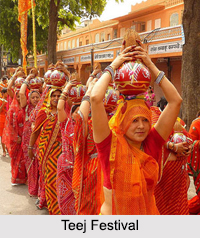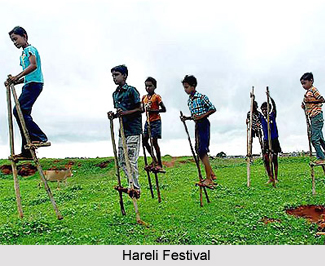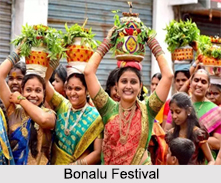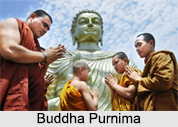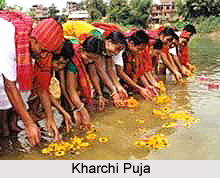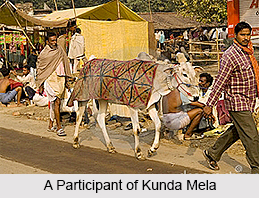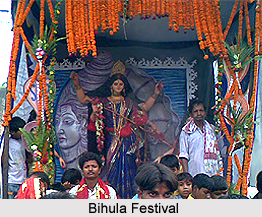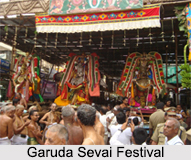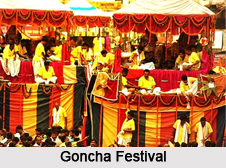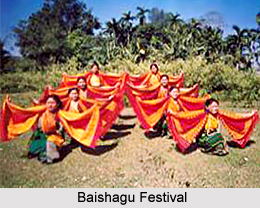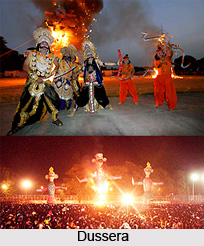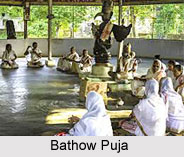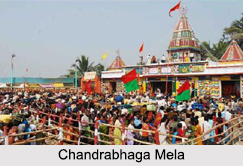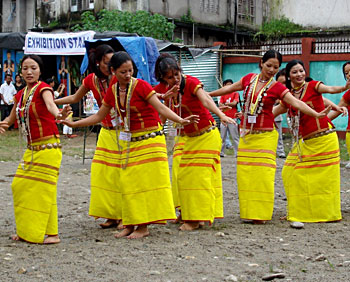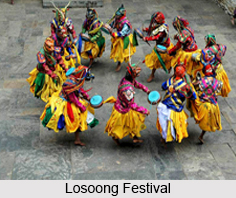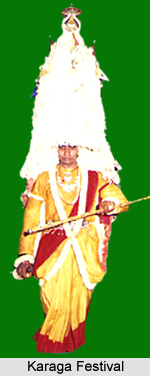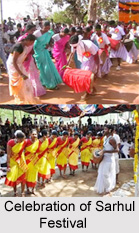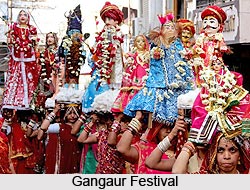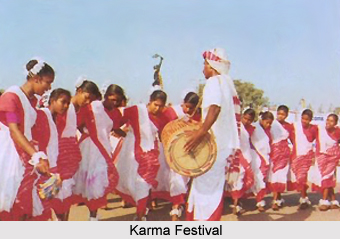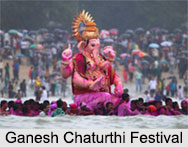 Religious Festivals of Western India are numerous and bring out the religiosity persuaded and flattered within the Indian festive panorama. Western India is home to different multi-coloured fairs and festivals. The festivals of West India present entertainment for both the young and the old people. One can delight the colour and fervour while seeing the western parts of India. Western India consists of the states of Goa, Gujarat, and Maharashtra along with the Union territory of Daman and Diu and Dadra and Nagar Haveli.
Religious Festivals of Western India are numerous and bring out the religiosity persuaded and flattered within the Indian festive panorama. Western India is home to different multi-coloured fairs and festivals. The festivals of West India present entertainment for both the young and the old people. One can delight the colour and fervour while seeing the western parts of India. Western India consists of the states of Goa, Gujarat, and Maharashtra along with the Union territory of Daman and Diu and Dadra and Nagar Haveli.
Different Religious Festivals of Western India
Following are the different religious festivals of Western India:
Vasant Panchami: The "Vasant Panchami" is one of the religious festivals of Western India that is celebrated in the memoir of Goddess Saraswati is quietly worshipped and no important temples are dedicated to her. Many also worship "Kamadeva", the god of love on this day. Children are taught their first words on this day, as an auspicious beginning to learning. Schools, colleges also organize special worship of Saraswati.
Brij Festival: "Brij festival" is one of the most popular festivals of Rajasthan. Lord Krishna has always been closely associated with the culture and history of Rajasthan. The Brij Festival is thus celebrated with a lot of enthusiasm in Rajasthan. Brij Festival is related to Lord Krishna which derives its etymological roots from the region in which it is celebrated. The festival is celebrated a few days before the festival of "Holi". The Brij region is located in the Bharatpur District. Dressed in multicoloured attires the villagers perform the famous Raslila that depicts the eternal love story of lord Krishna and his beloved Radha. The devotees then visit the temples of Hanuman, Ganga Bihari, Lord Shiva and matha of Goswamiji.
Mahavir Jayanti: "Mahavir Jayanti" is observed in quiet manner with prayers, visiting of sacred places and by worshipping the "Tirthankaras" as befitting the memory of great ascetic of India. Jains gather in temples to hear readings of the teachings of "Mahavira". The event holds special significance in Gujarat and Rajasthan due to the ancient shrines at Girnar and Palitana in Gujarat. Lord Mahavira was also known as "Vardhamana" and he was born to "Siddharth" and "Priyakarani" or popularly "Trishala Devi". Siddharth was the king of "Kaundinyapura" on the outskirts of Vaishali near Patna in Bihar. Both the parents were deeply permeated with the philosophy of Jainism preached by Parshvanatha, the 23rd Tirthankara. Mahavir Jayanti is celebrated as the birth anniversary of Mahavira, the 24th Tirthankara.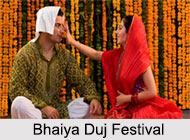
Baisakh Festival: "Vaisakh" or "Baisakh" (April - May) is the Sikh New Year festival and is celebrated on April 13 or 14. For the Sikhs in Punjab and other parts of the country, this day has a particular significance, as it also commemorates 1699, the year Sikhism was born as a collective faith. The main celebrations are held at "Anandpur Sahib" and at "Muktsar". It was on this day in 1699 that Guru Gobind Singh founded Khalsa at Anandpur Sahib.
Ganesh Chaturthi Festival: "Ganesh Chaturthi" is one of the most popular of Hindu festivals, since it is celebrated as the birthday of Lord Ganesha. It falls on the 4th day of the bright fortnight of "Bhadrapada" (August-September). It is also called "Vinayaka Chaturthi" and devoted Hindus observed it throughout India, as well as in all parts of the world. Lord Ganesha is the elephant-headed God. He is worshipped first in any prayers. Lord Ganesha`s prayer invokes him to remove all obstacles, which normally comes the way while starting any new work. Thus, he is also called "Vighnaharta" or "Vighneshwara". Few legends are prevalent concerning Ganeshs`s birth.
Navaratri Kolu Festival: "Navaratri Kolu" is a major Hindu festival, which is celebrated during `Dussehra` or `Navaratri` throughout India, especially in Southern India. This is a major festival of South India, which is celebrated for 10 days during September or October month.
During this festival, a mini-exhibition of toys and dolls are set up in many Hindu homes. The royal families of the "Tanjavur" and "Pudukkottai" kingdoms of Tamil Nadu used to celebrate the `Navaratri Kolu` festival in a very grand manner.
Bhaiya Duj Festival: "Bhaiya Duj" is known as Tikka in Punjab, "Bhau-Bij" in Maharashtra, "Bhai-Phonta" in Bengal and `Bhai-Teeka` in Nepal. On this day, brothers and sisters meet and express their love and affection for each other. Legend goes that Lord Yamraj, the God of Death, visited his sister Yamuna on this day. This day gained importance as a celebration of the relationship between a brother and a sister.
Nag Panchami Festival: Nag Panchmi is one of the main spiritual festivals of India when "Naag Devta" or the Snake God is worshipped with full fervour by Hindus all over India.
Gudi Padwa Festival: Gudi Padwa is one of the main festivals of west India celebrated in Maharashtra. "Gudi padwa" is the New Year day celebrated by Marathi community on the first day of the Chaitra month of Hindu calendar. This day matches to a day either in the end of March or in early April of the English Calendar.
Holi Festival: It is one of the main religious Hindu festivals. Holi is celebrated on the day of Purnima in the month of "Falgun" that corresponds with the months of February-March of English calendar. Purnima is the full moon day and carries huge importance in the Hindu lunar calendar.
Teej Festival: Dedicated to the "Goddess Parvati", Teej Festival marks the beginning of the monsoon. Swings are hung from trees and decorated with flowers. Young girls and women dressed in green clothes sing songs in festivity of the beginning of the monsoon.
Narali Purnima Festival: Maharashtra commemorates the "Narali Purnima", worshipping the Sea God and offering him coconut, on the complete moon day falling in August. This day is also celebrated as the Raksha Bandhan day.
